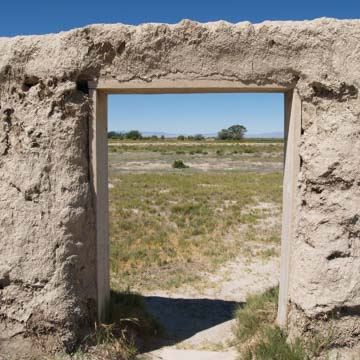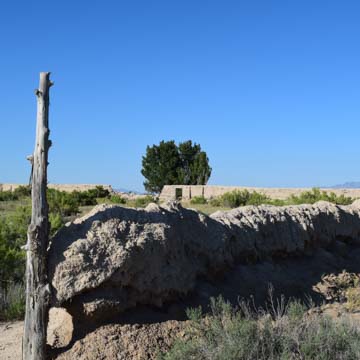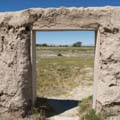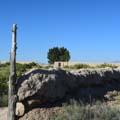Celebrated by contemporary official accounts as representing the “ingenuity of early settlers,” Fort Deseret is one of the scores of forts built in the Utah Territory by mid-nineteenth-century white territorial expansionists as protection from Native American tribes for whom European-American settlement negatively impacted their subsistence patterns, resulting in large-scale starvation. The Church of Jesus Christ of Latter-day Saints (Mormons) settled in the Pahvant Valley in the lower drainage of the Sevier River in 1860. They called the area Deseret, a word meaning “honeybee” that was derived from the Book of Mormon and that was first proposed by the Latter-day Saints for the entire territory in 1849. Deseret was a fairly established village when tensions between Mormon settlers and members of the Ute, Southern Paiute, Apache, and Navajo tribes escalated to a long and destructive conflict now known as the Black Hawk War (1865–1872). In 1866, Fort Deseret was erected in a period of 18 days by 98 men working under the direction of Superintendent John W. Radford and foremen William S. Hawley and Isaac W. Pierce.
The fort enclosed an area of 550 x 550 feet. It had 10-foot-high and 18-inch-thick walls of rudimentary mud construction reinforced with straw. The mud wall sat on 3-foot-thick lava stone foundations, which reduced the need for repairs following annual rains. The parapet was slightly sloped down from the center to keep rainwater from collecting on the ledge. Taller bastions were constructed in the northeast and southwest corners; they extended beyond the walls and contained three portals in each, from where guns could be fired. These portals were stabilized using rough-hewn lumber. The main gates were on the north and south walls, with smaller openings topped with rough logs located on the east and west walls.
Fort Deseret was never attacked but was used to protect livestock from theft and offered security to the small isolated colony during a crucial period of fighting. Its builders abandoned it in 1868 following a treaty with Black Hawk, the dynamic young Ute who had brought hungry warriors and their families “Mormon beef” and won their support. After its abandonment by the Mormons, the fort was often used by Native Americans for keeping livestock. Although dry weather and the absence of any nearby settlements have not completely decimated the mud walls, natural elements have taken their toll on them. A stone monument was erected on the site in 1937, with stones provided by the descendants of the fort builders. Fort Deseret was listed on the National Register of Historic Places in 1970. Today it remains the only remaining adobe fort in the state.




